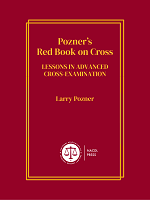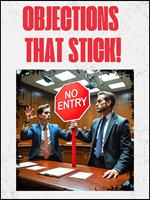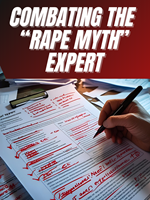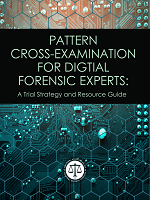- As of 1994, Arizona has effectively abolished parole.
- Arizona allows for both LWOP and JLWOP.
- Arizona does not have a minimum age for transfer of a juvenile to adult court, but the minimum age for a JLWOP sentence is 14.
State Constitution
Article 2, Section 15: Section 15. Excessive bail shall not be required, nor excessive fines imposed, nor cruel and unusual punishment inflicted.
NOTE: Article 2, Section 15 has been interpreted as the equivalent of the Eighth Amendment. However, the court has stated that it may consider Section 15 individually were a defendant to provide authority for a different interpretation.
Statutes
- Sentencing Guidelines System – None
Arizona does not have sentencing guidelines. However, A.R.S. § 13-701 describes when maximum and minimum sentences may be applied and what aggravating factors and mitigating factors the fact finder consider before sentencing a defendant.
- Habitual Offender Statute – A. R. S. § 13-703
§ 13-703. Repetitive offenders; sentencing
Case Law
General
The trial court has discretion in sentencing. Unless the trial court has clearly abused its discretion, the trial court’s sentence will be upheld if it falls within the statutory limits. State v. Stadie, 112 Ariz. 196, 197 (Ariz. 1975).
Arizona ceased comparative proportionality review of death sentences in 1992 because “proportionality review is fraught with problems and not constitutionally required.” State v. Nelson, 273 P.3d 632, 639 (Ariz. 2012).
The death penalty is not a cruel and unusual punishment under Article 2, Section 15. State v. Endreson, 108 Ariz. 366, 370 (Ariz. 1972).
State Constitution
Arizona courts have interpreted Article 2, Section 5 of the Arizona Constitution identically to Eighth Amendment of the federal constitution. The Arizona Supreme Court “has declined to interpret Arizona's prohibition against cruel and unusual punishment to provide protection greater than does the Eighth Amendment.” State v. Kasic, 228 Ariz. 228, 231 (Ariz. Ct. App. 2011) (citing State v. Davis 206 Ariz. 377, ¶ 12 (2003)). See also State v. Berger, 209 Ariz. 386 (Ariz. Ct. App. 2004) (overturned on other grounds); State v. Soares, 2010 Ariz. App. Unpub. LEXIS 501 (Ariz. Ct. App. 2010).
Arizona Courts “do not follow federal precedent blindly.” State v. Davis, 206 Ariz. 377, 380-381 (Ariz. 2003). However, they will not interpret Arizona’s Article 2, Section 5 differently from the Eighth Amendment without a compelling reason. Id. See also State v. Long, 207 Ariz. 140 (Ariz. Ct. App. 2004);State v. Jones, 2011 Ariz. App. Unpub. LEXIS 1052 (Ariz. Ct. App. 2011).
In the absence of authority to support a defendant’s claim that Article 2, Section 15 should be applied differently than the Eight Amendment, Arizona courts refuse to find such a difference between the state and federal constitutional provisions. See State v. Lujan, 184 Ariz. 556, 562 (Ariz. Ct. App. 1995); See also State v. Zimmer, 178 Ariz. 407 (Ariz. Ct. App. 1993).
The following cases mention both Article 2, section 15 of the Arizona Constitution and the Eighth Amendment, but do not provide significant separate analysis of the Arizona Constitution:
- State v. Bartlett, 164 Ariz. 229, 241 (Ariz. 1990) –
- State v. Mulalley, 127 Ariz. 92, 97 (Ariz. 1980) –
- Wigglesworth v. Mauldin, 195 Ariz. 432 (Ariz. Ct. App. 1999) –
- State v. Jones, 188 Ariz. 534 (Ariz. Ct. App. 1996) –
- State v. Smith, 183 Ariz. 424 (Ariz. Ct. App. 1995) –
- State v. DePiano, 187 Ariz. 41 (Ariz. Ct. App. 1995) –
- State v. Hamilton, 177 Ariz. 403 (Ariz. Ct. App. 1993) –
- State v. Delgadillo, 174 Ariz. 428 (Ariz. Ct. App. 1993) –
- State v. Lammie, 164 Ariz. 377 (Ariz. Ct. App. 1990) –
Proportionality
Review of a cruel and unusual punishment challenge to a criminal sentence invokes an objective three-prong test: (1) comparison of the gravity of the offense to the harshness of the penalty; (2) comparison of the sentence with sentences imposed on other criminals in Arizona; and (3) comparison of the sentence imposed with sentences imposable in other jurisdictions for commission of the same offense. State v. Waits, 163 Ariz. 216, 786 P.2d 1067 (Ct. App. 1989); See State v. Wise, 164 Ariz. 574, 795 P.2d 217 (Ct. App. 1990).
As long as the punishment is approximately proportionate to the type of crime and not so severe as to shock the moral sense of the community, its extent is necessarily within the discretion of the legislature." State v. Taylor, 82 Ariz. 289, 294 (Ariz. 1957); See also State v. Davolt, 2010 Ariz. App. Unpub. LEXIS 558 (Ariz. Ct. App. 2010).This proportionality analysis is applicable for both Eighth Amendment and Article 2, Section 15 cruel and unusual punishment claims. State v. Espinosa, 101 Ariz. 474, 477 (Ariz. 1966) (upholding a five to six year sentence without the possibility of parole for the sale and use of narcotics).
When no inference of gross disproportionality arises, “no intra-or inter-jurisdictional analysis is required.”State v. Mott, 187 Ariz. 536, 547 (Ariz. 1997).
In Berger II, 134 P.3d 378 (Ariz. 2006), the Arizona Supreme Court held that consecutive mandatory minimum 10-year sentences for possession of child pornography, reaching a total of 200 years, did not violate the Eighth Amendment or Article 2, Section 15. See State v. McPherson, 228 Ariz. 557, 562-63 (Ariz. Ct. App. 2012).
Citations To Graham
State v. Nelson, 273 P.3d 632 (Ariz. 2012) – Defendant was sentenced to death for the murder of his niece. His death sentence was based on a single aggravator, that the murdered juvenile was under 15 years of age. A.R.S. § 13-751(F)(9). Relying on Graham, Defendant argued that the court should find a categorical restriction on imposing the death penalty when the sentence is solely based on this aggravator. However, the court noted that Graham only acknowledged two subsets of categorical rules, “one determining that capital punishment is impermissible for nonhomicide crimes against individuals and the other turning on the offender's characteristics.” Id. at 639.
State v. Kasic, 228 Ariz. 228, (Ariz. Ct. App. 2011) – Defendant was sentenced to a total of 139.75 years in prison for a number of arsons and attempted arsons, some of which occurred when he was a juvenile. The court held that this term of years punishment did not violate the Eighth Amendment's prohibition against cruel and unusual punishment under Graham. Id. at 229.
State v. Moyers, 2012 Ariz. App. Unpub. LEXIS 160 (Ariz. Ct. App. 2012) – Relying on Graham, the defendant argues that his lengthy prison term-of-years for crimes he committed as a juvenile and his prosecution in adult court for these crimes constituted cruel and unusual punishment under both the Eighth Amendment and Article 2, Section 5. The court stated that Graham did not protect the defendant here.
State v. Vasquez, 2012 Ariz. App. Unpub. LEXIS 45 (Ariz. Ct. App. 2012) – Neither Graham nor Roper suggests a juvenile offender has a constitutional right to have his or her case adjudicated in the juvenile justice system.
Severe Sentences
State v. Waits, 163 Ariz. 216, 786 P.2d 1067 (Ct. App. 1989) – Defendant's contention that life imprisonment was a disproportionate penalty for the sale of cocaine valued at $20 held meritless, where the defendant committed the class 2 felony while on probation.













